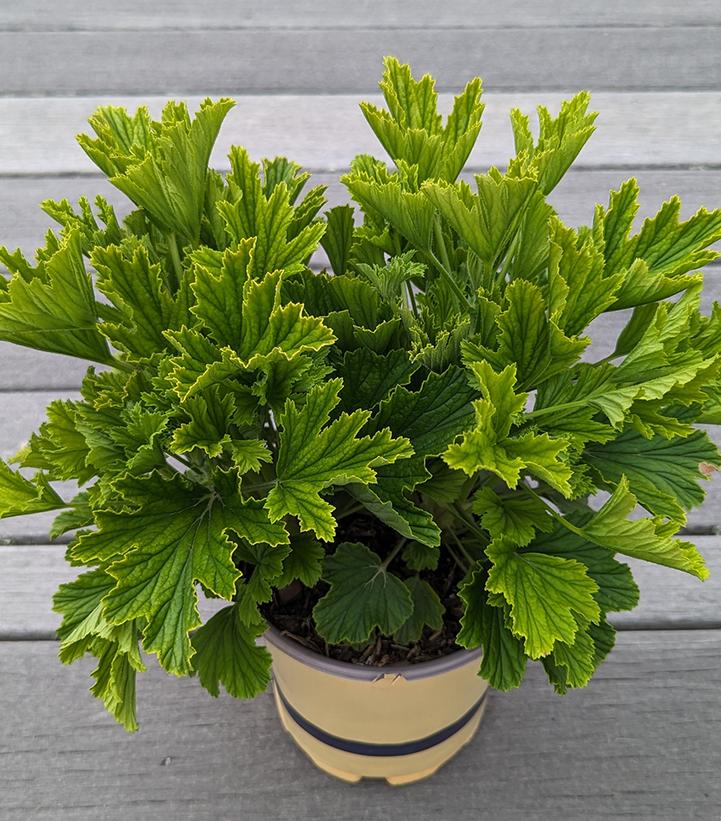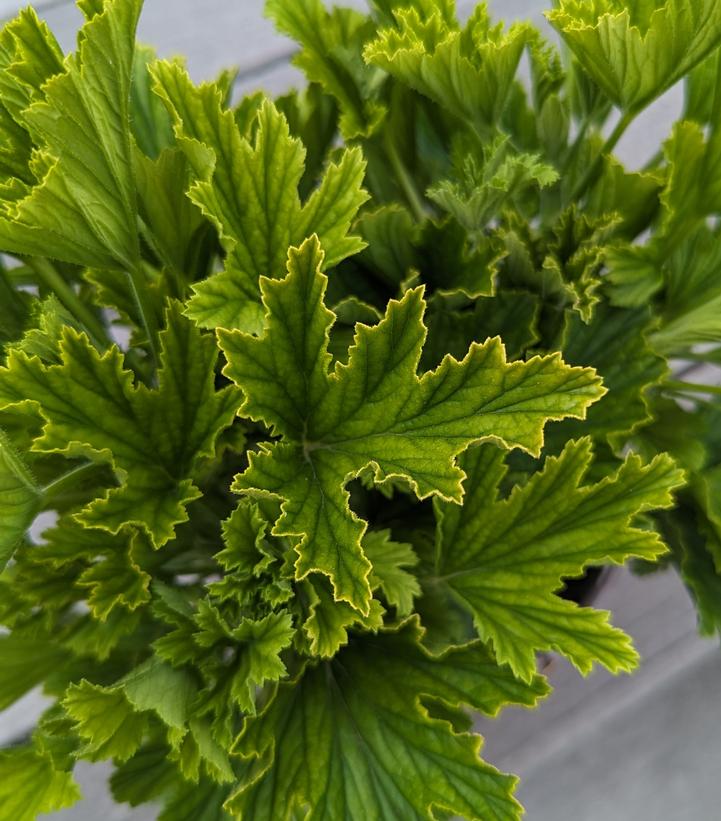



Pelargonium x 'Orange Fizz'
Orange Fizz Scented Geranium
- Tidy upright form
- Pink petals with a purple splotch
- Citrus-scented foliage is thick and slightly quilted
- Category: Annuals, Herbs
- Hardiness Zone: 9-10
- Height: 18-24 in
- Spread: 12-18 in
- Bloom Color: Pink Shades, Purple Shades
- Foliage Color: Green Shades
Citrus-scented, thick quilted, leathery, foliage contrasts against the pale pink with purple speckled blooms. Blooms summer through fall. Plant this upright grower in pots, smaller gardens, or along a pathway. Will flourish through the summer heat. Great insect-repellent.
Attributes
| • | Blooms all Season |
| • | Border or Bed |
| • | Container |
| • | Dried Flower/Foliage |
| • | Fragrant |
| • | Summer Bloomer |
Foliage Color
| • | Green |
Attracts Wildlife
| • | Supports Bees |
Programs
| • | Sara's Superb Herbs |
Exposure
| • | Full Sun |
Additional Information about Pelargonium x 'Orange Fizz'
Pelargonium or scented geraniums are aptly described as living potpourri for the home. They are not grown for their flowers, but for their scent. Most are native to South Africa and became popular with Victorians when the colonists brought them back to Britain with them. Unlike other garden plants that are fragrant only when blooming, scented are fragrant all year long. The scent is contained in the small beads of oil produced in the glands at the base of the leaf hairs. Bruising or crushing the leaves breaks the beads and thus the plant releases its scent. All are wonderfully fragrant and have a distinctive smell, but to my nose only a few smell like their names: apple, lime, and the lemon geraniums, to be exact. I leave it to each individual nose to determine the smell of each.
Harvest and Use: Scenteds are a fine addition to fresh cut bouquets. Long stems of foliage will keep for 2 to 3 weeks. During Victorian times this foliage was a favorite in tussie-mussies, the traditional, small bouquets from fresh cut flowers.
Scented geraniums, like culinary herbs, have a place in the kitchen. Layer leaves in sugar to flavor. Line the bottom of a cake pan with leaves before pouring in the batter. Dunk bunches in apple jelly before removing from the heat. The leaves can be added to fruit punches, vinegars, salads, and marinades. They combine well with lemon verbena, lemon basil, lemon balm, and mints. Try steeping rose scented, lemon, or ginger leaves in black tea for a treat. Add cloves and slices of lemon and orange to hot or iced tea. Freeze in ice cubes to add to cold drinks later.
Pests: Scenteds are not bothered by pests when grown outdoors, but should be monitored for aphids, whiteflies, spider mites, and mealybugs indoors. The following spray remedies are listed starting with the lowest ecological impact to the highest: water jet spray, citrus spray, alcohol spray, insecticide soap, liquid rotenone/pyrethrins spray, and horticultural oil.
Growing & Maintenance Tips for Pelargonium x 'Orange Fizz'
Scented geraniums are not difficult to grow. By following a few easy tips, they will flourish. They grow best in temperatures that range from 50 to 60 degrees at night and 65 to 75 degrees during the day. In frost-free areas they can be grown outdoors all year. They like fast-draining soil and full sun. When grown in a pot, use a soil-less mix of half peat moss and half perlite. Garden soils pack down and drain too slowly, depriving the roots of oxygen. They like a slightly acid soil close to a pH of 6.5.
They do well in dry areas where other plants might have difficulty surviving. Pathways edged with scenteds give off their fragrance when passer-bys brush against them. Their varied leaf shapes, texture, color, and variegation make them ideal for a window box. Try combining them with nasturtiums, pink or purple petunias, trailing verbenas, and ground ivy. Don't crowd the plants as they need good air circulation. In frost areas, they can be grown as annuals or brought in during winter. They do well on a windowsill. Do not bring them in after the night temperature drops below 45°F, as they will be shocked by the warmth, causing leaves to yellow and drop. Scenteds need four hours of sunlight. In lieu of this, fluorescent lights mounted a few inches from their tops will provide enough light. Repot your scenteds every 2 years.
Scented Geraniums are fussy about how they are watered. Over-watering promotes soil-borne diseases and soft growth. Under-watering causes slow growth and yellow-wilted leaves. Water when the top of the soil feels dry. Water until it runs out the drainage holes. This not only wets the soil, but flushes out salts left from fertilizers. Never let pots sit in a saucer of water, and keep water off foliage and flowers to prevent the spread of diseases. Watering in the morning on a sunny day keeps leaves from being wet all night.
Scented Geranium are heavy feeders of magnesium. A teaspoon of Epsom salts will provide enough magnesium for good growth. During the growing season from April to October, fertilize with 15-15-15 or 15-30-15 mix, applying half the recommended amount every second watering. Fertilize this way every eighth watering the rest of the year.
Except for the few that are compact, scented geraniums need to be pruned for a full shape. Otherwise, they become ungainly and leggy. Snipping off the tip of a growing stem will force it to grow at the nodes. Pruning should begin once the plant is 4-5 nodes or 6" tall. Snip off the tip with sharp scissors or a razor blade. Shoots will grow within 2 to 3 weeks. Once the plant is shaped to your liking, allow it to bloom. This will take 6 to 8 weeks. After that continue removing browned leaves, excessive growth, and spent flowers. If you wish to propagate new plants, allow the plant to grow beyond where you regularly trim. New growth should be 4 to 5 nodes in length. The best time of the year to prune is late winter/early spring.
